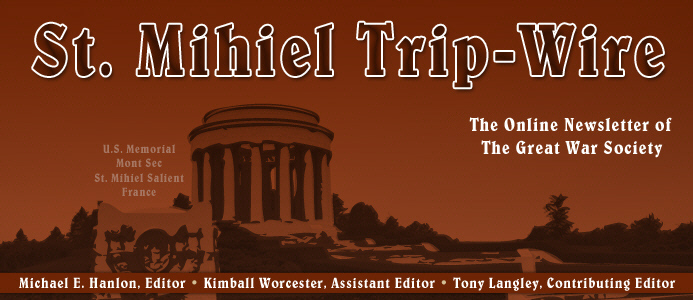

TRENCH REPORT: As you can see from our masthead, this issue of the Trip-Wire will cover two months. Much of my time in July will be taken up preparing for my group tour of the Italian Front or the trip itself. I hope you will enjoy this issue, it includes a good helping of our usual variety of World War I topics. The next issue should include some new material and images on the Great War in Italy. All the best until September.MH
This Month's Internet Feature
The Visual Side of the Great War
Postcards are popular among WWI collectors and archivists. Here are some on-line collections:
Bowman Grey (Univ. North Carolina) Collection of WWI Postcards
An International WWI Collection
New York Public Library Contains both Photos and Postcards
Propaganda Postcards
Life in a U.S. Army Cantonment
New at Our Own & Our Friends' Great War Websites
Click on Title or Icon to Access
|
Recall the 95th Anniversary of the opening of the Battle of the Somme with this downloadable illustrated teacher's guide from the Imperial War Museum. (Good for young persons too.)
At Great War Society Sites
June 28th was the 92nd Anniversary of the Signing of the Versailles Treaty. Here are some of discussions of that subject:
At WFA-USA Sites
|

A World War I-era destroyer was the first American ship to engage the Japanese during the attack on Pearl Harbor. The USS Ward had been built in 1918 at Mare Island, California, naval shipyard in a record 17 days and saw service with the fleet before the Armistice. On 7 December 1941, several hours before the air attack, she encountered a Japanese midget submarine while patrolling outside the harbor, engaged and successfully sank her opponent. Later in the war, after being reconfigured as a fast transport vessel, the Ward was lost to kamikazes at Leyte.
|

Kitchener of Khartoum Rose
After the British war minister died at sea in June 1916, an award-winning hybrid rose was named in his honor. The rose pictured above is a commercially available version of the hybrid.
|
GREAT WAR 2011 EVENT CALENDAR
|
A World War I Event Calendar
Download Word Document Calendar
Here
We have resumed maintaining our WWI Calendar. There is simply more information than we can display here on the Trip-Wire. We count on all of you who schedule WWI events to contact us with new and updated information.
(send an email with schedule information)
|
National World War I Seminar
The Soon to Be
World War One Historical Association presents:
War Art & the Art of War
9-10 September, 2011
Citi-Garden Hotel
South San Francisco, CA
Near S.F. International Airport
(Download Program and Registration Form)
|
Western Front Association
U.S. Branch Chapter Meetings
Check for Your Region
Regularly Updated (details)
|
Great War Society Monthly Chapter Meetings
Berkeley, San Francisco, and
Palo Alto, CA
Regularly Updated (details)
|
Upcoming Events at the National World War I Museum
Kansas City, MO
New Exhibits and Lectures Scheduled
Regularly Updated (details)
|
Send additions/corrections for our master schedule:
Email Response
|
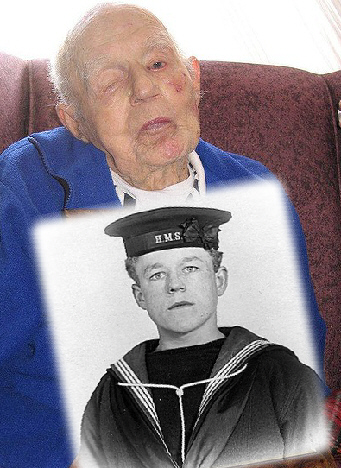
Claude Stanley Choules (3 March 1901 – 5 May 2011) was the last World War I combat veteran in the world. The one-time Royal Navy petty officer died in Sydney, Australia. During the Great War he served on battleship HMS Revenge and witnessed both the surrender and scuttling of the High Seas Fleet. Rest in Peace to a generation.
Have you forgotten yet?. . .Look up, and swear by the green of the spring that you'll never forget.
Aftermath
Siegfried Sassoon
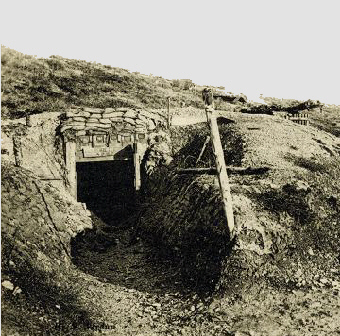
Entrance Crown Prince's Tunnel, Mort Homme, Verdun 1919
|
|
|
|
Page Two
|
|
|
 |
| In preparing for my upcoming trip to the Italian Front, I've discovered a lot of photos showing an extensive use of war dogs in the mountain sectors. Here is a selection. MH |
|
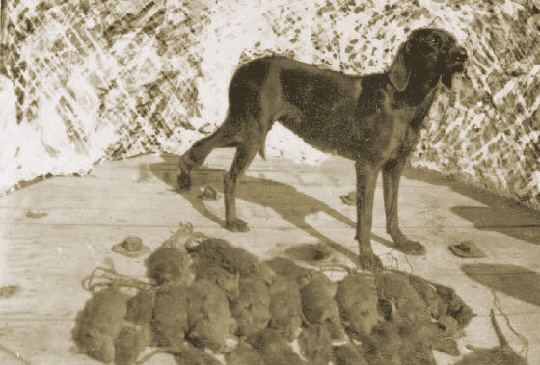
Esther -- Champion Ratter with One Hour's Take
|
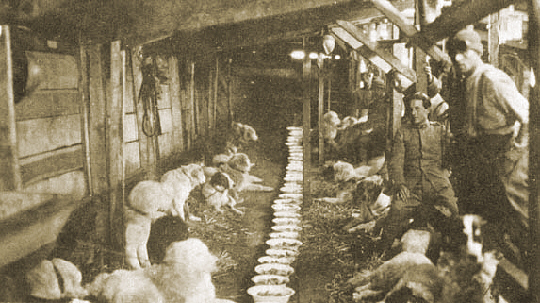
Italian War Dog Kennel
|
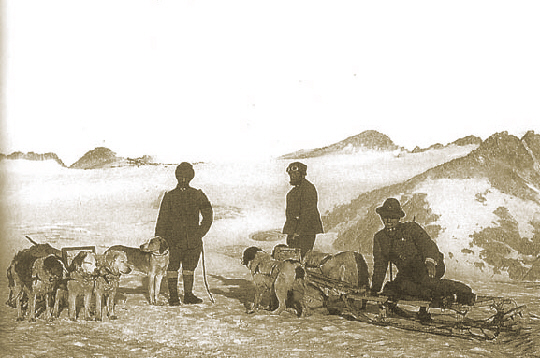
Dog Sleds atop the Adamello, Highest Battlefield on the Italian Front
|
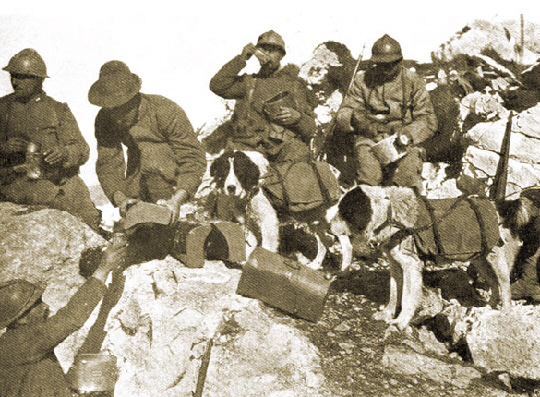
The Popular Wine Ration Delivery Squad
|
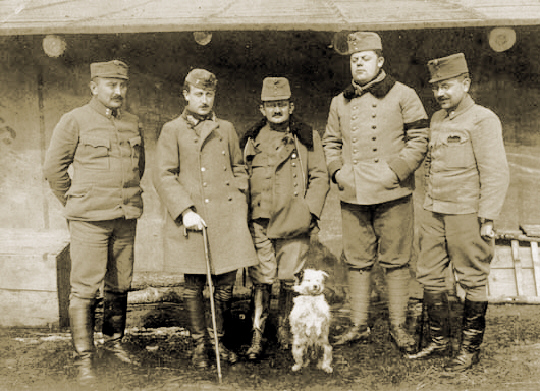
Austrian Officers with Their Mascot. Every Unit Seemed to Have One.
|
|
|
Progress Report
Boots on the Ground at the Sgt. York Discovery Trail |
During the weekend of 20 May, as part of his Eagle Scout Service Project Josiah Mastriano organized and led a restoration effort on the actual battlefield where Sergeant Alvin York knocked out a German machine gun and captured 132 German soldiers in 1918. The team's work included fixing a drainage problem at an artesian well that was making the trail muddy, replacing old trail logs, cleaning up the Sgt. York Memorial Park, and replacing old town signs. However, the most challenging aspect of the project was moving some 37 tons of gravel -- 30 tons of which was moved by hand, to repair and improve over one kilometer of the trail. The Sergeant York Historic Trail was inaugurated in 2008 on the 90th anniversary of Alvin York's exploits. (link)
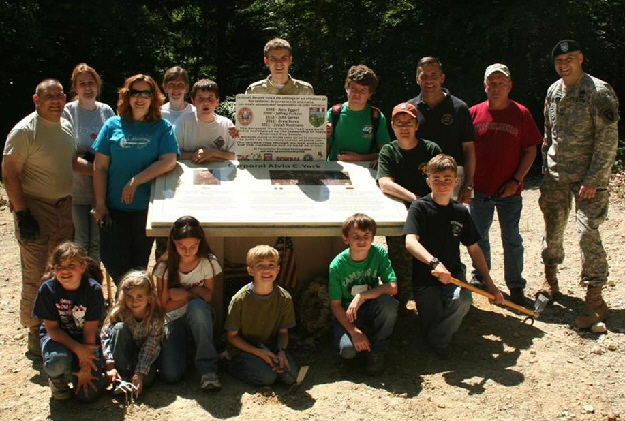
|
|
World War I Headlines
in the
21st Century
|
|

| 100 Years Ago
|

The Agadir Crisis, also called the Second Moroccan Crisis, was the international incident sparked by the deployment of the German gunboat Panther, to the Moroccan port of Agadir on 1 July 1911. The visit was, ostensibly, to protect the lives of German citizens and deter the French from annexing Morocco. The visit was interpreted by the French as an attempt to subvert agreements reached at the Algeciras Conference and by Britain as a threat to Gibraltar and British trade routes. The crisis ended with Germany's acceptance of territory in the Congo in return for recognition of France's claim to Morocco.
|
Click Here to Visit the Website of Our Contributing Editor Tony Langley
War in a Different Light

|
|
Subscribe to Our Online Magazine
|
|

|
|
|
Page Three
|
|
|
Something to Think About:
Unanticipated Consequences of War
|
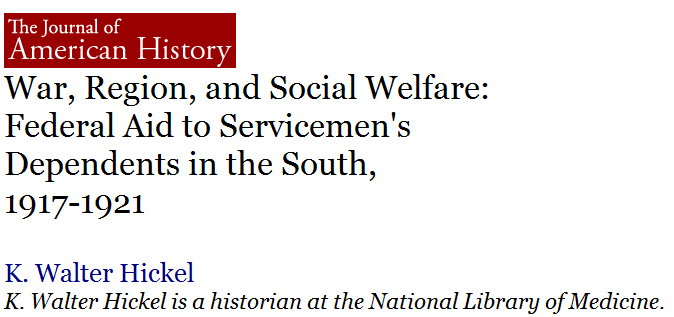
Don't let the title of this article fool you. It is brimming with interesting details about how the war changed a region and the American nation in ways no one ever considered beforehand. In this award winning article--which appeared in the March 2001 issue of the Journal of American History--Walter Hickel explores in more depth one aspect of the history of the War Risk Insurance program--its impact on the economics, politics, and social relationships of the South. Dr. Hickel argues that because of the relative poverty of the region during this era, the impact of this regular source of income, independent of the usual social and economic lines of descent in Southern society, was greater and more significant than elsewhere in the country. Not only did the program have an outsized economic impact, Hickel argues, but it altered gender and race relationships as well.
Click on the image above to download a pdf version of the article.
|
|
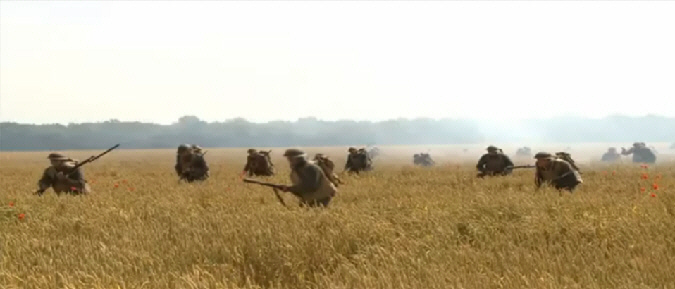
Through the wheat fields at Belleau Wood, as depicted in a recent, highly authentic reenactment of the famous assault produced for the U.S. Marine Corps Museum at Quantico, Virginia.
|
|
|
 |
2010 Tomlinson Award Winning World War I History
The Final Battle; Soldiers of the Western Front and the German Revolution of 1918
|
Reviewed by Len Shurtleff
Author Scott Stephenson is associate professor of military history at the U.S. Army Command & General Staff College. This work won the 2010 Western Front Association Tomlinson Book for the best work of history in English on World War One.
This well-crafted and thoroughly researched monograph is the first in many years to explore the return home of the defeated Imperial Army. It concerns chiefly the choices made by frontline veterans (Frontschweine) impacting the German revolution from October to December 1918. While the upheavals of October and November 1918 had little effect -- thanks to superior leadership from experienced junior officers -- on the discipline of approximately 1.5 million German frontline troops in the West, support troops behind the lines, garrisons at home, and battleship sailors were in full revolt providing the revolution with most of its energy.
As they marched home under command and fully armed, arriving frontline soldiers played an important but now forgotten role in determining the course of the revolution and in the survival of the badly splintered Ebert government. In the early stages of revolution beginning in November 1918, frontline veterans ensured the fall of the Kaiser, preserved the political influence of the officer caste, and created the basis for the "stab in the back" myth. By demobilizing themselves soon after arrival across the Rhine, they deprived the Ebert government of any support from the old army and paved the way for creation of the Freikorps made up of both veterans and underage youth, which fought in the ensuing civil upheaval and ultimately helped undermine the fledgling Weimar Republic.
The Final Battle; Soldiers of the Western Front and the German Revolution of 1918, Scott Stephenson, Cambridge, 2010, ISBN 978 0 521 15946 5
|
|





















